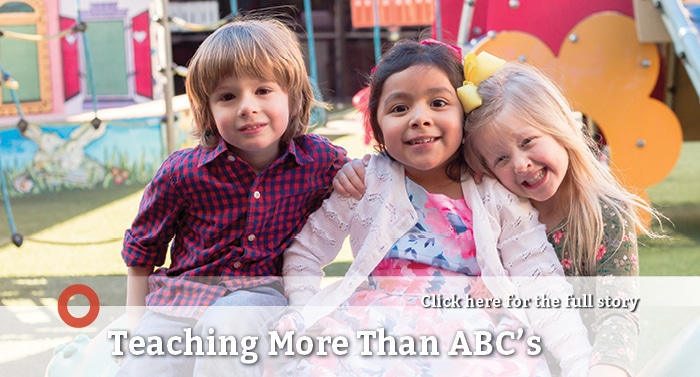Classrooms That Build a Lifetime of Skills
By Beatriz Orr, M.Ed., BCBA
Why are inclusive practices important in the classroom?
Inclusive classrooms benefit all students. Research has demonstrated positive educational outcomes for students with disabilities who are in inclusive educational placements. Positive outcomes can include fewer absences and behavioral referrals, as well as better outcomes after high school in the areas of employment and independent living.
Additionally, teachers are more likely to provide instruction in a way that values the unique contributions, supports the varied needs, and reaches all learners in the classroom. As a result, children master academic standards, but also learn to embrace diversity and promote inclusion on the playground, in the workplace, and beyond. As a community, we benefit from the larger workforce, innovative ideas, and valued contributions of all members of our community.
What are the benefits of promoting inclusion?
Individuals with and without disabilities benefit from inclusion in a variety of ways. These benefits can include having a sense of belonging, having equal access to education, learning alongside same-age peers, building independence, and developing meaningful relationships, to name a few.
Encouraging inclusive practice in the classroom allows children the opportunity to notice similarities and differences among their peers. These practices also help children develop interpersonal and copying skills, accept others and learn life skills such as empathy and compassion.
As well, inclusive education is one of the most effective means to combat discriminatory attitudes and create welcoming communities from very early on, and may benefit the overall community by boosting understanding, flexibility, and acceptance of differences.
What are some common misconceptions about inclusion?
“Students with disabilities will not be able to “keep up” with the classroom curriculum and expectations.” Teachers in inclusive classrooms recognize and respect different learning styles and know that not every child learns at the same rate and at the same time. Teachers adapt and modify the curriculum and implement individualized strategies to support the child meet their maximum potential.
“Including a child with disabilities in a general education class will be distracting or potentially harmful for the other children.” Inclusive classrooms establish social and emotional supports for all students. Teachers use effective and appropriate strategies to maintain a healthy learning environment for all.
“Inclusion is a program.” Inclusive education is not a program, but an educational philosophy that values the participation and education of children with and without disabilities in the same classroom. It’s important to remember that inclusive practice is not an outcome, it is a process.
What are key elements for effective inclusive education?
At SARRC, we are committed to building a supportive community for individuals on the autism spectrum across all our programs. For example, a core component of accomplishing this is creating an inclusive environment for students within our Community School program where children with and without autism learn alongside each other in the classroom.
Key elements to promoting inclusion include fostering positive attitudes among your team, ensuring appropriate support systems are in place and training is provided to support your inclusive efforts in the classroom.
We’ve learned that implementing the practice of successful inclusion efforts involves continuous learning and adapting to ensure that all students are not only accepted but valued and appreciated for what they bring to the table.
Beatriz Orr, M.Ed., BCBA is the Senior Clinical Services Manager at Southwest Autism Research & Resource Center (SARRC). Learn more about SARRC and the Community School at autismcenter.org/communityschool

